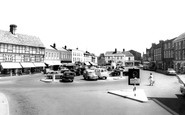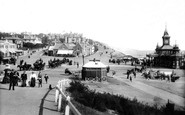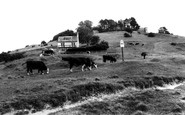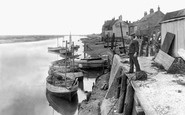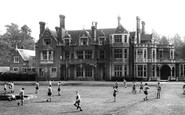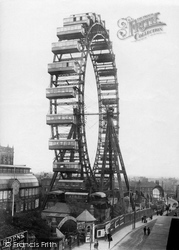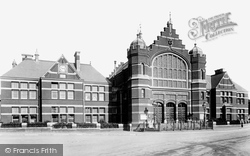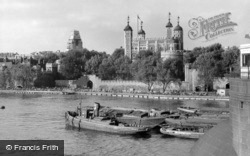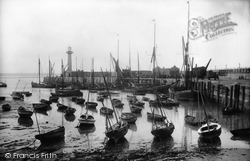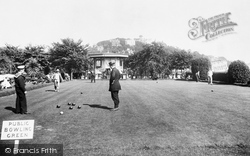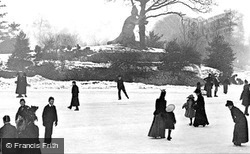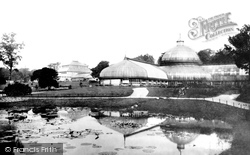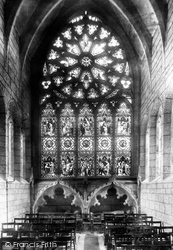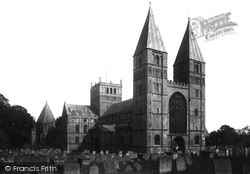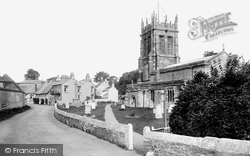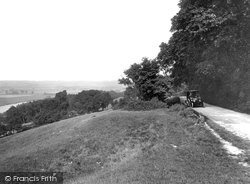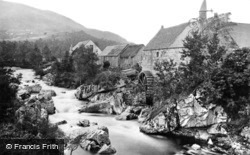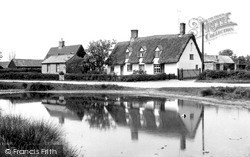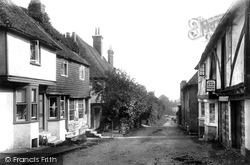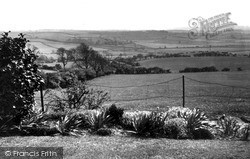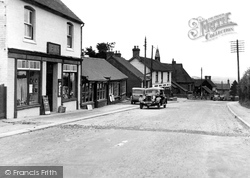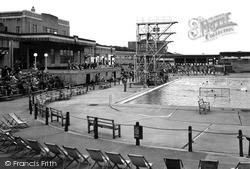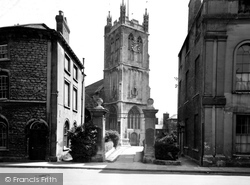Photos
28 photos found. Showing results 181 to 28.
Maps
79 maps found.
Books
2 books found. Showing results 217 to 2.
Memories
1,021 memories found. Showing results 91 to 100.
All Grown Up
Being of a young age by this time, twelve years old, I remember the market square being filled with motorbikes, with each the bike riders wearing leather jackets topped with a cut-off denim with this being decorated with many a metal ...Read more
A memory of Wantage in 1972 by
Childhood Days
As I have lived all my life in Childer Thornton I have so many memories. I would just like to record some from my childhood. The village was a wonderful place to grow up in. There was no traffic to disturb our street play ...Read more
A memory of Childer Thornton in 1950 by
Drayton Jottings
Drayton Jottings. Auntie Alice, in Kings Avenue, regularly seen, out on her front doorstep, she kept it clean, the 'raddled' red stone was buffed to a shine, 'Old fashioned traditions', here continued,so fine. one day, from ...Read more
A memory of Market Drayton by
My Dear Home Town Of Bournemouth
I was born there in 1928, in Boscombe Hospital, Bournemouth, and lived in Bournemouth till 1962. There is no where like Bournemouth, lovely beaches, stores, theatres, the Chines, and Shell Bay. An excursion to ...Read more
A memory of Bournemouth in 1940 by
Christmas Eves 1960s
I was born in Stroud and lived in Cashesgreen and Paganhill until I was 11 when the family moved to Hertfordshire. My aunt lived at Minchinhampton in a house my sister now owns. As children we remember making the then very ...Read more
A memory of Rodborough in 1963 by
A Year To Remember
How well I remember arriving at Wells-next-the-Sea from Leicester as a new bride. My husband was a former high school pen-friend who was now in England serving in the U.S Air Force, having been in the country from his ...Read more
A memory of Wells-Next-The-Sea in 1951 by
Where I Was Born
My Beginning, at Sole Street near Cobham Kent. (9th March 1946 - 2nd January 1951) I was born on Saturday March 9th 1946 at 3.29pm at Temperley, The Street, Sole Street, Kent. I was delivered at home by the ...Read more
A memory of Sole Street in 1946
We Knew This As Four Wents Pond!
We lived at Henfold a couple of miles from here, I used to be a pain in the neck to my older brother who used to come & fish at this pond. I caught my first "Red throat minnow" here. In the winter when it ...Read more
A memory of Holmwood Corner in 1952 by
Sweeping Staircase
I also have memories of St Nicholas, and was a pupil at the school from 1949 aged four, till 1952. Miss Garrard was the headmistress, and I seem to remember she was very kind. I had a kindergarten teacher who was absolutely ...Read more
A memory of Mickleham in 1949 by
Bicycles And A Happy Hunting Ground.
Being the offspring of parents otherwise engaged, and only partially supervised by a succession of Nannies, whose only concern was that we should be clean and respectably dressed when we got up to mischief, we ...Read more
A memory of New Milton in 1950 by
Captions
280 captions found. Showing results 217 to 240.
Built next to the Winter Gardens in 1896 in an attempt to compete with the Tower, the 220ft Gigantic Wheel was a financial disaster.
Thorngate, a philanthropic grocer and tea merchant who donated money for local housing, the Thorngate Hall was regularly used for public meetings until it was gutted by an incen- diary bomb in the winter
William Thorngate, a philanthropic grocer and tea merchant who donated money for local housing, the Thorngate Hall was regularly used for public meetings until it was gutted by an incendiary bomb in the winter
During the winter, the strip of land known as the Ouse Washes in between is allowed to flood, and is consequently a major haven for wildlife.
White Tower keep, dating from the late 11th century and still the focus of the castle, is now somewhat reduced by office blocks, including the 600 foot high 1970s NatWest Tower and the bizarre 1980s Minster
The most disastrous was the winter storm of 1808, which destroyed most of the stone pier and the neighbouring sea front.
This celebrated and fashionable winter resort occupies the northern corner of Tor Bay, and is securely sheltered from all winds, except those from the south-east.
In the winter, however, the creek is a brooding, atmospheric place, with the massed trees hanging heavily over the dark waters of the River Lerryn and many of the cottages empty.
The parish church of St John the Baptist overlooks the water meadows of the Ouse; the sunsets from here on a winter's evening are wonderful.
Pleasure seekers make the most of the winter weather skating on one of the many lakes. The Crystal Palace became a paradise for Londoners keen to escape the dirt and the grime.
The Kibble Palace, the largest glasshouse in Britain, is now a Winter Garden, but was formerly used for public meetings and concerts.
The tracery of the rose window is of an intricate design, and its Victorian glass is especially attractive when seen, lit from within, from the market square on winter evenings.
Southwell is a Norman church built on the site of a Saxon minster founded in AD956 on land given to Oscytel, Archbishop of York, by King Eadwig.
Here we have a detailed view of the premier pre- Domesday minster church of the Dorchester hundred. Its present fabric has grown from a cruciform building of the 11th century.
Winter Hill is a noted beauty spot on the Berkshire side with views along the Thames. The hill rises about 180 feet above the river and gives superb views of the valley below.
Among later visitors to the village was Robert Louis Stevenson: while spending a winter here he wrote 'Treasure Island'.
The thatched roofs are of reed harvested from Wicken Fen in the winter months. Another harvest from the fen was buckthorn, vital for charcoal.
In summer the dust would fly as horses and carts pressed their way through, and in winter the rains would turn it into a quagmire. On the right is Colman Stores – 'China and Glass, Furniture'.
They would sow oats in spring which were harvested late, followed by a winter crop of rye. Royds Moor is named after a royd cleared for crops probably around the mid 12th century.
One of the pubs in the village is called the Kremlin - most appropriate in a cold winter.
The complex was demolished in 1991 after being severely damaged by gales during the previous winter.
back to medieval times when the population of a hamlet cleared land, usually sufficient to make one or two fields, for crops.They would sow oats in spring which were harvested late, followed by a winter
One such attack was made against Lydney, where Sir John Winter, Royalist commander in the Forest of Dean, lived in the heavily fortified White House.
According to the Rev Kilvert's diary of 1873, couples on their way to evening services in winter followed a practical though unusual local tradition:'My Mother says that at Dursley, when ladies and
Places (2)
Photos (28)
Memories (1021)
Books (2)
Maps (79)



